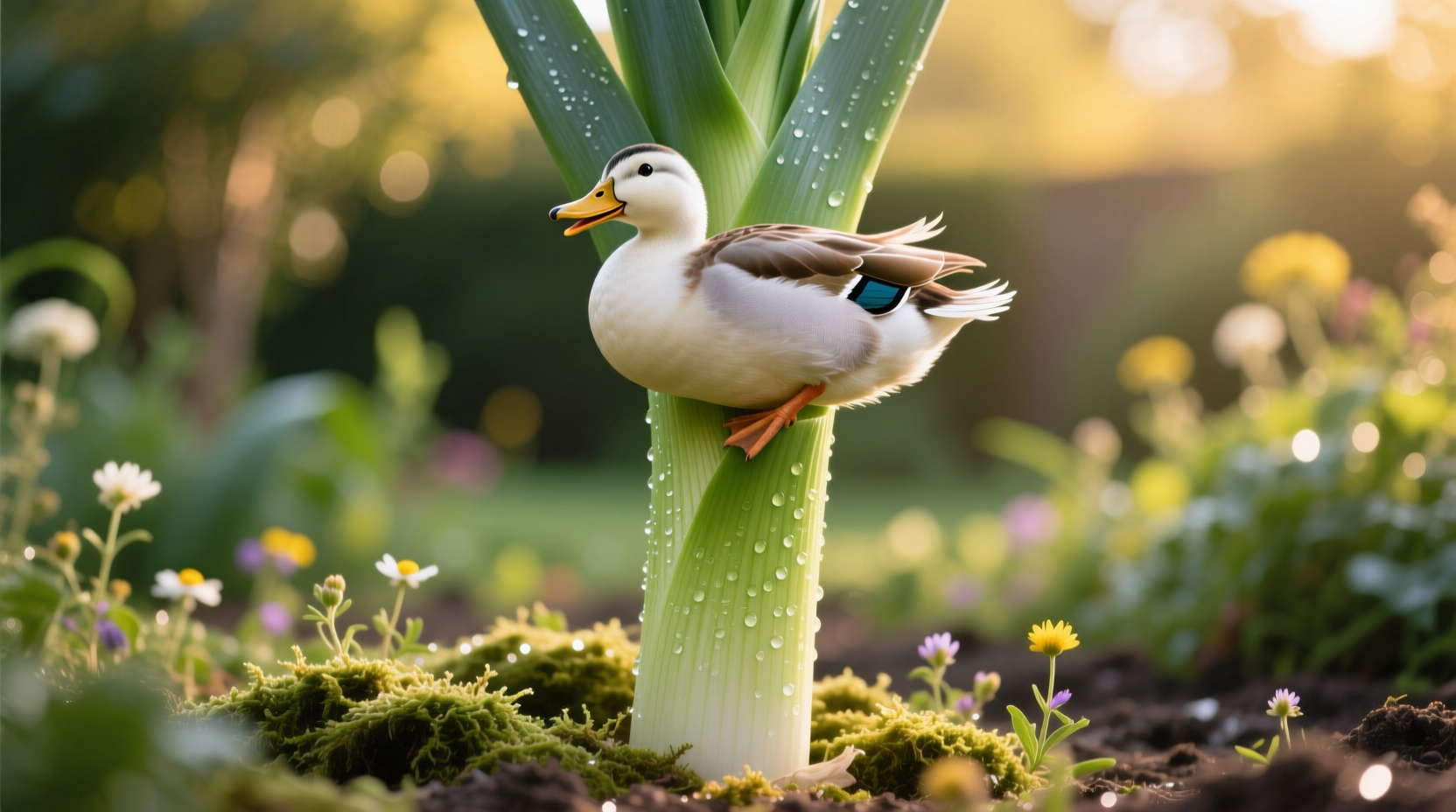Leek duck refers to a classic European preparation where succulent duck is cooked with tender leeks, creating a harmonious balance of rich meat and mild onion flavor. This traditional dish features pan-seared duck breast served with braised leeks, often finished with a wine or stock-based sauce that complements both ingredients perfectly.
For home cooks seeking to master this elegant yet approachable dish, understanding the proper technique makes all the difference. The magic happens when the duck's rich fat renders slowly, basting the meat while creating the perfect cooking medium for the leeks. This culinary pairing has delighted palates across European kitchens for centuries, and with the right approach, you can recreate this restaurant-quality meal in your own kitchen.
Why Duck and Leeks Form a Culinary Perfect Pair
Duck and leeks share a historical connection dating back to medieval European cuisine. According to Encyclopædia Britannica, leeks were among the most commonly cultivated vegetables in medieval European gardens, often paired with game birds like duck that were plentiful in the wild. The mild, sweet flavor of leeks perfectly balances duck's rich, slightly gamey profile without overwhelming it.
| Ingredient | Flavor Profile | Complementary Effect |
|---|---|---|
| Duck breast | Rich, fatty, slightly gamey | Provides substantial base flavor that stands up to bold preparations |
| Fresh leeks | Mild onion, sweet when cooked | Cuts through richness while adding subtle sweetness and texture |
Essential Ingredients for Authentic Leek Duck
The beauty of this dish lies in its simplicity. You'll need just a few quality ingredients:
- 2 boneless duck breasts (about 8 ounces each), preferably with skin on
- 2 large leeks (white and light green parts only)
- 15g unsalted butter
- 15ml dry white wine or vermouth
- 120ml good quality chicken or duck stock
- Fresh thyme sprigs
- Salt and freshly ground black pepper
When selecting ingredients for your leek duck preparation, choose duck breasts with a deep red color and firm texture. For leeks, look for crisp white bases with vibrant green tops—avoid any with yellowing or slimy spots. The USDA FoodData Central confirms that leeks provide significant vitamin K and vitamin A, while duck offers substantial protein and iron, making this dish both delicious and nutritious.

Step-by-Step Cooking Process
Follow this professional technique to achieve restaurant-quality leek duck at home:
Preparing the Duck
Score the duck skin in a crosshatch pattern, being careful not to cut into the meat. This crucial step allows the fat to render properly during cooking. Season generously with salt and let rest at room temperature for 20 minutes before cooking—this ensures even cooking throughout.
Rendering the Fat
Place duck breasts skin-side down in a cold skillet. Turn heat to medium-low and allow the fat to render slowly over 15-20 minutes. This gradual process yields crisp skin and tender meat. As the fat accumulates, periodically spoon it out into a heatproof container—this rendered duck fat is liquid gold for future cooking!
Preparing the Leeks
While the duck cooks, prepare your leeks. Cut off the dark green tops (save for stock), slice the white and light green parts lengthwise, then rinse thoroughly to remove any trapped dirt. Slice into 1-inch pieces. Sauté in 1 tablespoon of the rendered duck fat until tender but still holding their shape.
Finishing the Dish
Once the duck skin is golden and crisp, flip the breasts and cook for 3-4 minutes for medium-rare. Remove from pan and let rest. In the same pan, add wine to deglaze, scraping up browned bits. Add stock and thyme, reducing by half. Return leeks to the pan and heat through. Slice duck diagonally and arrange over the leeks with sauce spooned generously on top.
Avoiding Common Leek Duck Mistakes
Many home cooks encounter these pitfalls when preparing duck with leeks:
- Rushing the rendering process - High heat creates tough skin and under-rendered fat
- Not properly cleaning leeks - Grit trapped between layers ruins the dish
- Overcooking the duck - Duck breast should be medium-rare for best texture
- Adding leeks too early - They should remain tender-crisp, not mushy
Serving Suggestions for Your Leek Duck
This classic preparation shines when served with simple accompaniments that don't compete with the main flavors. Consider:
- A crisp green salad with vinaigrette to cut through the richness
- Mashed potatoes or creamy polenta to soak up the delicious sauce
- A glass of Pinot Noir or earthy Burgundy that complements both ingredients
For an authentic French touch, garnish with fresh chives and a sprig of thyme. The dish works beautifully for both weeknight dinners and special occasions when you want to impress guests with minimal effort.
Storing and Reheating Leftovers
While leek duck is best enjoyed fresh, leftovers can be stored properly:
- Refrigerate within 2 hours of cooking in an airtight container
- Consume within 2-3 days for best quality
- Reheat gently in a skillet with a splash of stock to prevent drying
- Never microwave duck breast as it ruins the texture
Rendered duck fat can be strained and stored in the refrigerator for up to 6 months—use it to roast potatoes or sauté vegetables for incredible flavor.











 浙公网安备
33010002000092号
浙公网安备
33010002000092号 浙B2-20120091-4
浙B2-20120091-4